Google Ad Grant: 9 Best Practice tips [2023]
Looking for some Google Ad Grant best practice tips to help you optimise your account and spend more of your budget?
If you are just starting out with Google Ad Grants, you may want to use our step-by-step setup guide.
First off, there is no requirement to spend all of your Grant. Focus on generating relevant traffic that will help meet your digital marketing goals.
However, there are probably relevant and valuable ways you could be getting more bank for your (free) buck.
Let’s jump into the list.
7 best practice tips for your Google Ad Grant:
- Tip #1: Use Smart Bidding
- Tip #2: Set the budget for every campaign to $329
- Tip #3: Supercharge your keyword research
- Tip #4: Create Dynamic Search Ads
- Tip #5: Use as many extensions as relevant to your organisation
- Tip #6: Match your ads with search intent
- Tip #7: Optimise landing pages
- Tip #8 & 9: Get the best tips delivered to your inbox
Use Smart Bidding in your Google Ad Grant
Firstly, you want to make sure you have at least one campaign using Smart Bidding Strategies.
These automated bidding strategies allow Google Ads to set your bid for a keyword.
There are many advantages of using a Smart Bidding strategy, but the big one for a Google Ads Grant account is that it allows the system to bid more than US$2.00, which is the limit when setting bids manually in a Google Grant account.
To use Smart Bidding, you will need to track conversions (s a program requirement forthe Google Ad Grants program).
Smart bidding strategies are:
- Maximise conversions
- Target CPA
- Target ROAS
Set the budget for every campaign to $329
You don’t need to divide your daily budget of $329 among your campaign.
To maximise your ad grant spend, you should set each campaign budget to $329 per day like this:
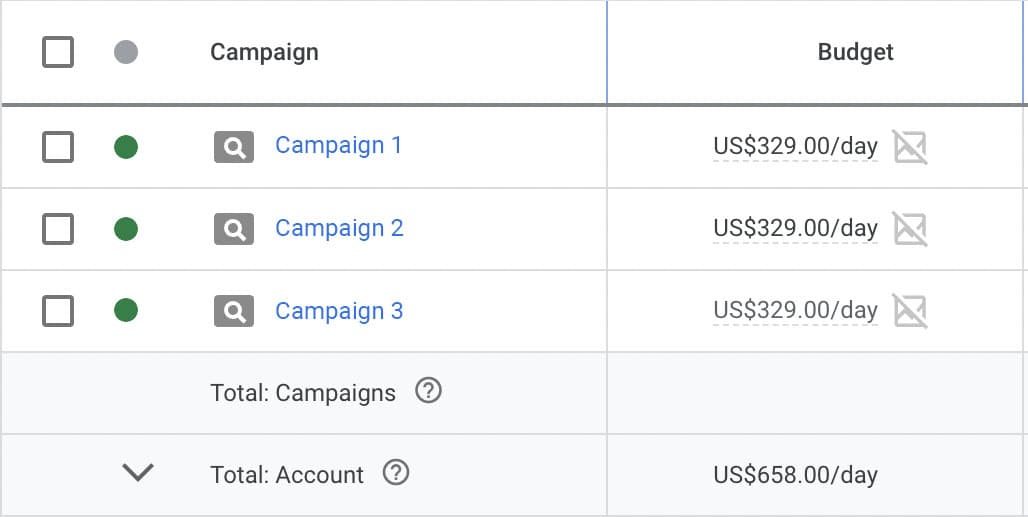
IF you ever find yourself regularly maxing out your daily budget, then think about which campaigns to prioritise your spending on.
Up your keyword research game with Semrush
Google Keyword Planner is a great place to start your keyword research, but if you want to get really serious and invest in a paid tool, I highly recommend Semrush.
Semrush’s Keyword Magic Tool will help you quickly build out your campaigns with related keywords.
And with Semrush’s competitive research tools, you can find out what other charities working in your sector are targeting and ranking organically for, then create campaigns for the same keywords.
You can take your time figuring out if it is the right tool for you with a 14-day trial.
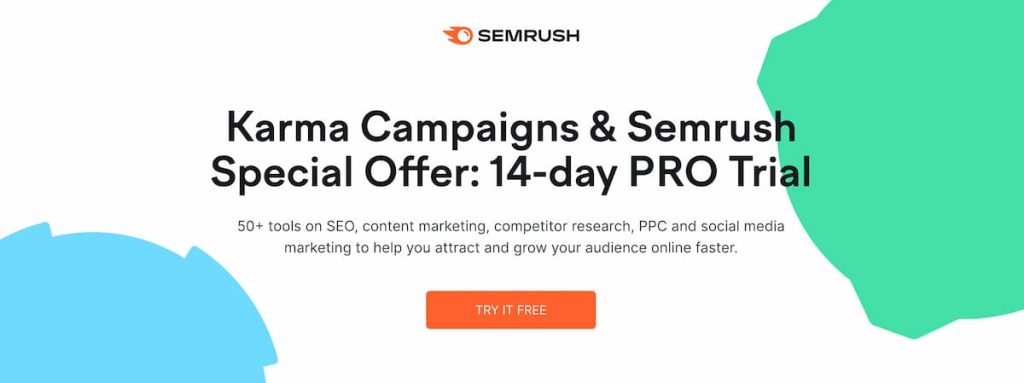
Create Dynamic Search Ads in Google Ad Grant
It’s probably impossible for you to create ad groups and ads for every relevant search. That is where Dynamic Search Ads come in handy.
Dynamic Search Ads can automatically target keywords and create ads based on the content that is on your website. You can use your whole website or target specific pages.
Google provides this step-by-step guide to setting up Dynamic Search Ads.
Use as many extensions as relevant to your Google Ad Grant
Extensions add additionaf information to your search ads and, according to Google, can help lift click-through rates.
Sitelink extensions
As per grant policy, you must have two site link extensions in your Google Ad Grant. Sitelink extensions direct the user to specific pages of your website and look like this:
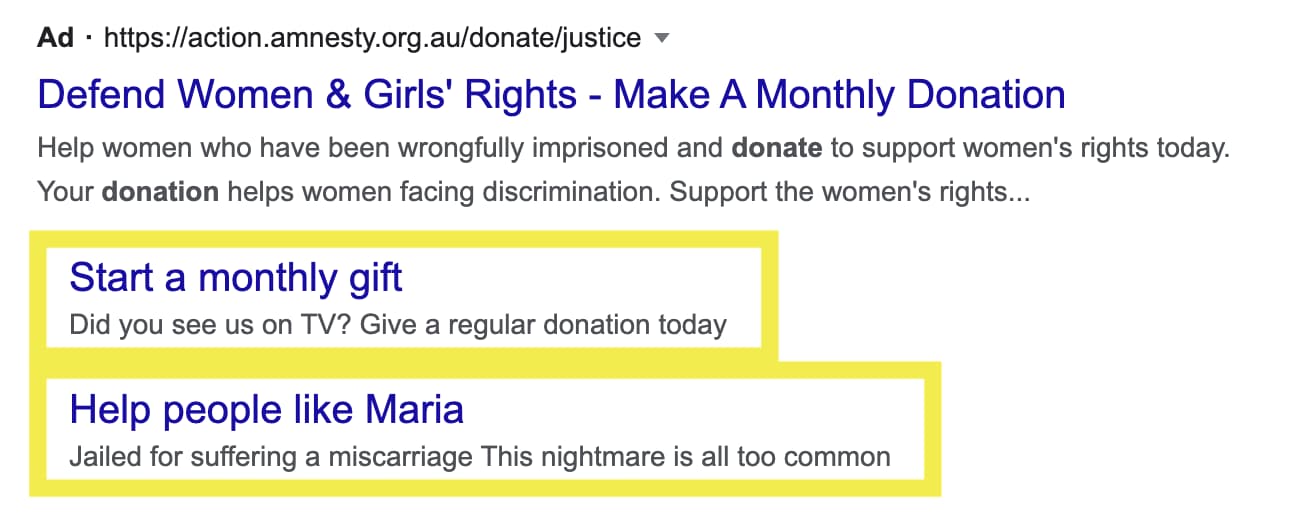
Or this:

Make sure your use site link extension is relevant to each campaign.
Once you have your sitelink extension set up, there is a whole range of other extensions for you to test.
Here are some of my favourites in action.
Image extension
Image extensions add an image to your search results.

Call extension
Call extensions add your phone number. People on mobile can call with one click.
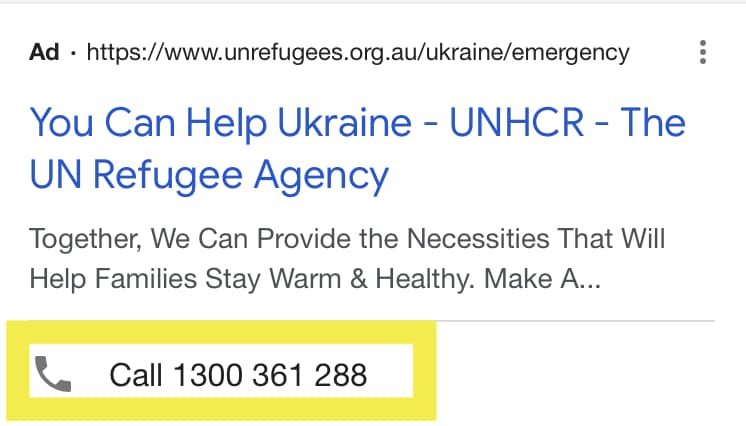
Location extension
Yoguesseded it, location extensions add locations to your search ads.

Callout extensions
Callout extensions add little snippets of information to your search ads.

Even more extensions
Google recommends enabling all extensions that make sense.
If your organisation has an app, you could even try the App extension. If you are selling products or merchandise, price and promotion extension could be for you.
You can find a detailed description of all extensions here.
Match your ads and landing pages to search intent
Search intent is the purpose behind a user’s search, which can be categorised into four main types: navigational, informational, commercial, and transactional.
How might these search intent categories apply to your Google Ad Grant?
Navigational intent
Navigational intent is when a user is looking for a specific website or web page. For example, a user might search for “Oxfam Australia” with the intent of navigating to the Oxfam Australia homepage.
Informational intent
Informational intent is when a user is looking for information on a particular topic. For example, a user might search for “refugee policy Australia” if they want to learn more about refugee policy in Australia.
Commercial intent
Commercial intent is when a user is investigating products and services with the intention of making a purchase. For example, a user might search for “best fairtrade coffee online” if they are looking to purchase fairtrade coffee from an online store.
It may seem like commercial intent isn’t relevant to nonprofits, but we can think about it as the investigation stage. Before a user decides to donate to a charity, they may research organisations with searches like “charities supporting refugees” or “how to help homeless Sydney”.
Transactional intent
Transactional intent is when a user is looking to complete a transaction, such as making a purchase or donation. For example, a user might search for “donate to the red cross” if they are looking to donate to the red cross.
Ensuring your ads AND landing pages are relevant to search intent will lead to more impressions and clicks.
Optimise your Google Ad Grant landing pages
It’s not enough to get people to click on your ads; you need to give them a fantastic experience when they get to the landing page.
Make sure your landing pages are fast, look, and function great on mobile and desktop.
A great way to start optimising your landing pages is to analyse how people use your site with HotJar.
HotJar lets you record site visits, create heatmaps and collect feedback. You will quickly see what is and isn’t working for your users.
And you may even be eligible for a free business plan.
Don’t miss this secret sauce 🌶️🔥
These final two tips are the most effective! Get tips #8 and #9 delivered to your inbox by dropping your details here 👇
Want more help?
While getting US$10,000 to spend on search ads is awesome, there is no grant for extra time. And making the most of your Google Ad Grant takes time and effort. Find out how we can help you make the most of your Grant.


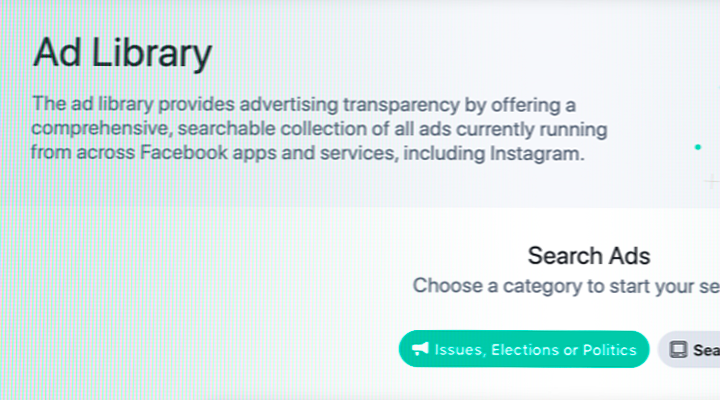

![Digital Marketing for Social Enterprises: Definitive Guide [2023]](https://karmacampaigns.com/wp-content/uploads/2022/06/Blog-hero-digital-marketing-nonprofits-768x518.jpeg)
![How to get petition signatures with Facebook Ads [2023 guide]](https://karmacampaigns.com/wp-content/uploads/2022/03/SignatureGaryKnight.jpg)